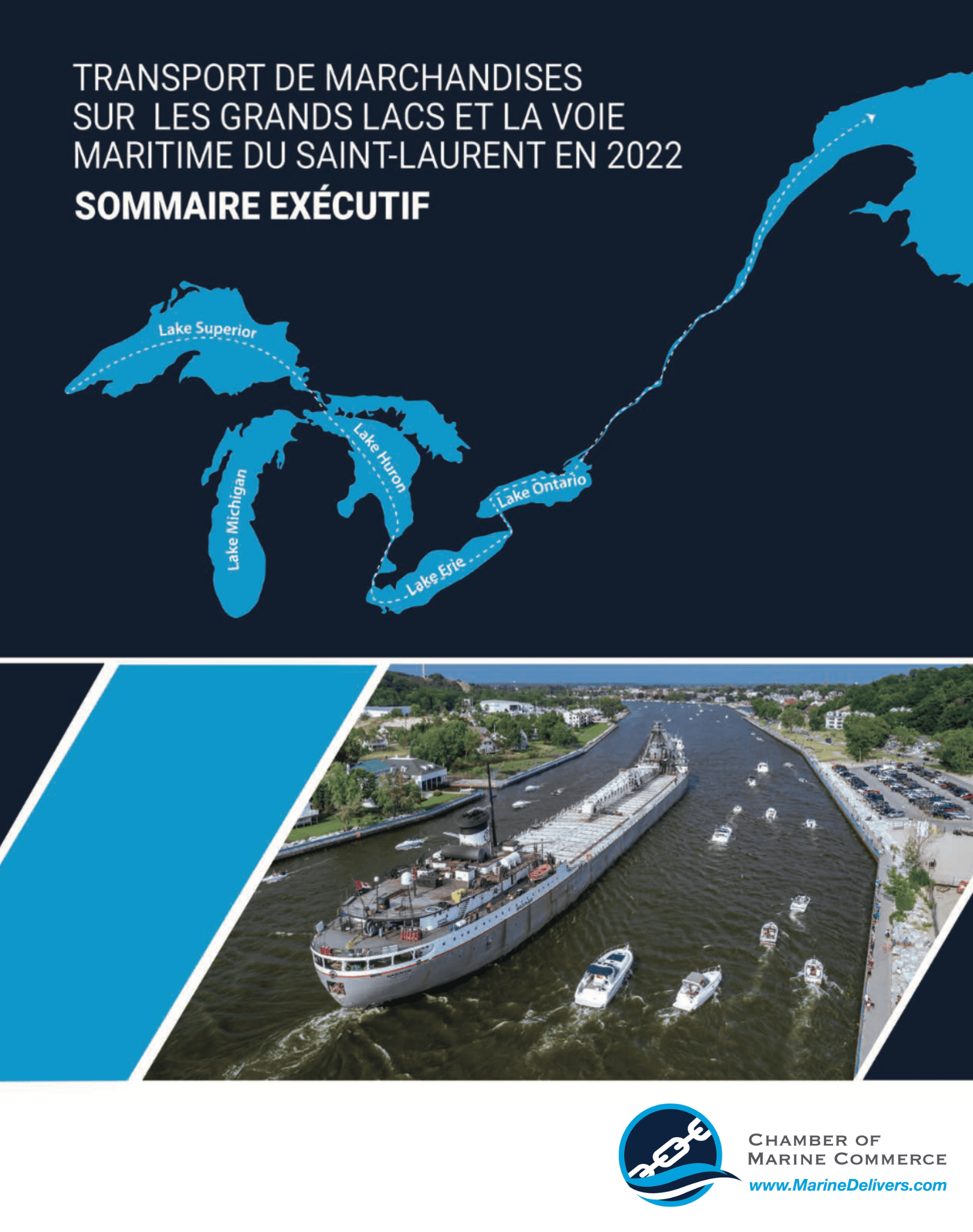
The latest system-wide report from the Chamber of Marine Commerce (CMC) shows that ships traversing the Great Lakes-St. Lawrence Seaway Waterway carried an estimated 143.0 million metric tonnes of diverse cargo to and from domestic ports and overseas markets during the 2022 shipping season. This volume of traffic was achieved against a backdrop of challenges that included rapidly increasing interest rates, ongoing diversification in the types of cargo transiting the waterway, global unrest, industry-specific supply chain challenges, and the lingering effects of the COVID-19 pandemic. The fact that total annual tonnage was only down 4% compared to 2021 is evidence that domestic marine shipping remains the resilient heartbeat of the North American economy.
“This report captures the pivotal role played by domestic marine shipping on the Great Lakes St. Lawrence waterway with respect to maintaining economic momentum throughout North America,” said Bruce Burrows, President and CEO of the Chamber of Marine Commerce. “Despite the unique challenges experienced in 2022, we still saw diverse cargo traffic throughout the waterway, new services and innovations introduced by ports and ship owners to power shipper effectiveness, and shippers utilizing the most efficient and sustainable mode of transport to power their business success. While economic conditions and geo-political influences continue to shift unpredictably, domestic marine shipping remains constant in its ability to deliver for consumers and the business community.”
The 2022 Great Lakes-St. Lawrence Seaway Waterway Tonnage Activity report is the only data resource of its kind. Compiled by CMC, this annually-issued report collects and analyzes Canadian-flag, U.S.-flag and foreign-flag tonnage for the bi-national navigation system, provides an overview of the key cargo commodities and their underlying economic and business drivers.
The findings of the report show:
Note: Canadian-flag vessel tonnage data was sourced from the major Canadian domestic ship owners, while the foreign-flag vessel tonnage and U.S.-flag vessel tonnage data was provided by The St. Lawrence Seaway Management Corporation and the Lake Carriers’ Association (LCA), respectively.
Note: The Great Lakes – St. Lawrence Seaway System (GLSLS) connects Canada to the United States and connects inland North America to other parts of the world through the Atlantic Ocean. Stretching west from Lake Superior to the end of the St. Lawrence Seaway, this bi-national trade corridor facilitates billions of dollars of economic activity annually and supports hundreds of thousands of jobs.
Note: This also includes upbound and downbound cargo carried by Canadian-flag vessels in the lower St. Lawrence River and beyond Anticosti Island and into the Atlantic and Arctic Regions. It also includes cargo carried by foreign-flag vessels that at some point passes through the Canadian portion of the St. Lawrence Seaway lock system.
Flickr – Download photos of the Great Lakes-St. Lawrence shipping industry
https://www.flickr.com/photos/marinecommerce/albums/72157657049769546
About the Chamber of Marine Commerce
The Chamber of Marine Commerce is a bi-national association that represents more than 100 marine industry stakeholders including major Canadian and American shippers, ports, terminals and marine service providers, as well as domestic and international ship owners. The Chamber advocates for safe, sustainable, harmonized and competitive policy and regulation that recognizes the marine transportation system’s significant advantages in the Great Lakes, St. Lawrence, Coastal and Arctic regions.
Media Contact:
Jason Card
Chamber of Marine Commerce
jcard@cmc-ccm.com
(613) 447 5401
The Chamber of Marine Commerce (CMC) is a bi-national association that represents diverse marine industry stakeholders including major Canadian and American shippers, ports, terminals and marine service providers, as well as Canadian domestic and international ship owners. The Chamber advocates for safe, sustainable, harmonized and competitive policy and regulation that recognizes the marine transportation system's significant advantages in the Great Lakes, St. Lawrence, Coastal and Arctic regions.
Media Contact:
Jason Card
Chamber of Marine Commerce
jcard@cmc-ccm.com
(613) 447 5401